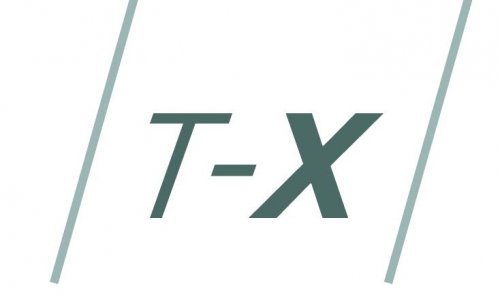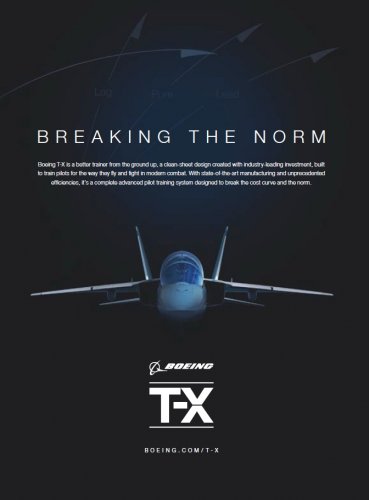kcran567 said:
NeilChapman said:
cluttonfred said:
While I like cool stuff as much as the next person, I am surprised by all these negative reactions to a competition to produce a trainer on a relatively tight budget. If the USAF or anybody else is actually being a good steward of the taxpayers' money and trying to do more with less, why should that be a bad thing? If anything, the one argument I would use is that the T-38 Talon has been in service more than 50 years, so its successor might aspire to similar longevity and therefore require great upgradablity and modularity to pave the way for long life. That would be a real innovation.
I agree. You don't put marble in the upstairs bathroom. I'd like to see a beautiful T-X airframe as well. The reality is that I'd rather see the money spent on an F-22 replacement. If the T-X program costs can be reduced then I'm all for it.
Of course, it will be great if it's inexpensive but also capable. I'm looking forward to seeing the capabilities of the NG design.
Whatever...technology should be in development (or already exists) to make air-frames more cheaply you guys sound like cheerleaders for the status quo lets pay these contractors a huge amount of money for more of the same, in fact the technology is stagnant. You think the TX contract is really going to be "doing more with less" I have a bridge I want to sell you. I don't buy you're argument that cutting edge needs to be necessarily more expensive. Were just buying the brand that they are offering without demanding more. And why cant the TX be cutting edge? Its supposed to train pilots for all sorts of scenarios well into 50 years from now. It should be a springboard for follow on aircraft and F-XX or whatever replaces the F-22. When you are one of the few remaining contractors around you can charge a premium for whatever is offered that is what the problem is, and also that these contractors have monopolies-There is no competition! Not so long ago there were 10x more aircraft manufacturers. Sure the Boeing TX might meet the requirements but there is no denying it isn't a step forward. Am skeptical of their claims at cheaper manufacturing as well, will be paying typical price for a similar aircraft before all said and done.
I'm not sure what your argument is. The USAF is demanding more.
I happen to believe that the AF knows what they want. They know that managing data and battlefield awareness are probably more important than flying the airframe.
They want a 'shell' that is capable of x, y and z performance characteristics.
The electronics in that shell will be changing fairly frequently. That needs to be easy to do.
The pilots will be interacting with other systems - AirSea battle etc. - so simulated integration is important.
They want to practice refueling.
You can simulate the stealth capabilities by managing the sensor returns in the simulation software. It's not that complicated.
So to me, cutting edge, for T-X, means cutting edge in battlespace simulation software.
Cutting edge means an engine thats very inexpensive to operate and maintain.
Cutting edge means electronics that utilize an open systems architecture so upgrades are competitive and easy.
Cutting edge means minimizing corrosion problems
Cutting edge means quick turn-around times for aircraft.
The current training systems don't offer cutting edge battlespace simulation software
The F404 is well utilized in the military; lots of experience, very reliable and inexpensive to maintain.
The F-15, F-16, F-18 and F-22 do not utilize open systems architecture. Pain in the ass to upgrade.
About 40% of programed depot maintenance is corrosion related.
I'd be looking for mmh/fh of 3 or less and a mtbm of over 6h. Compared to existing airframes, these numbers are cutting edge.


